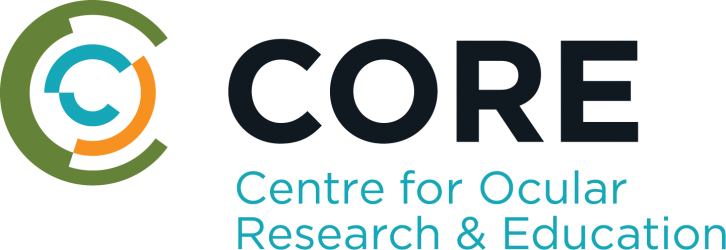-
New Contact Lens Update Highlights Methods to Grow Contact Lens Practices
WATERLOO, Ontario, June 30, 2025—The Centre for Ocular Research & Education (CORE) has published issue 84 of Contact Lens Update, which focuses on ways for eye care practices to increase the number of contact lens wearers and how to prevent patient discontinuation (dropout). The bi-monthly publication is available at no charge by visiting ContactLensUpdate.com. “Contact…
-
Expanding CORE’s horizons
The Centre for Ocular Research & Education (CORE) is expanding its expertise in managing clinical and lab studies to other areas of research WATERLOO, Ontario, April 30, 2025—The largest research centre of the University of Waterloo School of Optometry & Vision Science is expanding its scope. The Centre for Ocular Research & Education (CORE) will continue to…
-
New Contact Lens Update Focuses on Sustainability for Practices, Manufacturers, and Patients
WATERLOO, Ontario, April 29, 2025—As the “Earth Month” comes to a close, the Centre for Ocular Research & Education (CORE) has published a new guide to help practice staff and manufacturers minimize environmental impact year-round. Issue 83 of Contact Lens Update focuses on contact lens-related sustainability initiatives, wearer attitudes, and practical patient education. The bi-monthly…
-
CORE Launches SustainableEyecare.com
Website Helps Eye Care Professionals and Patients Responsibly Use, Recycle and Dispose of Contact Lenses and Eyewear WATERLOO, ONTARIO, April 21, 2025—Ahead of Earth Day, the Centre for Ocular Research & Education (CORE) at the University of Waterloo has launched SustainableEyecare.com. The first-of-its-kind website is designed to educate eye care professionals and patients about the…
-
CORE Names Its “Top 10 of 2024” Scientific Papers
WATERLOO, Ontario, March 4, 2025 — Each year, CORE publishes on a wide variety of topics, and 2024 was no different. CORE researchers co-authored 33 peer-reviewed manuscripts that were published in 2024, with topics covering drug-releasing contact lenses, 3D-printed lens materials, myopia control, specialty lenses, clinically meaningful differences when using rating scales, and much more. The…
-
Ortho-K Offers Significant Advantages Beyond Myopia Control, According to New Publication from CORE
WATERLOO, Ontario, March 3, 2025—While orthokeratology has earned considerable attention of late for myopia control, it remains a versatile, reversible, and evolving solution for correcting multiple refractive errors and providing freedom from traditional eyewear. Acknowledging renewed interest worldwide, the Centre for Ocular Research & Education (CORE) has dedicated Issue 82 of Contact Lens Update to…
-
CORE Publishes “The Science of Myopia Control: What Every ECP Should Know”
Contact Lens Update Issue 81 Offers Guidance from Top Researchers & Clinicians WATERLOO, Ontario, December 18, 2024—In response to widespread demand from eye care professionals to better understand myopia progression and intervention, the Centre for Ocular Research & Education (CORE) has themed Issue 81 of Contact Lens Update as “The Science of Myopia Control: What…
-
CORE Publication on Multifocal Contact Lenses Builds Fitting Confidence and Aids Wearer Adoption
WATERLOO, Ontario, October 7, 2024—Although an increasing number of multifocal contact lens options are available, global prescribing rates remain relatively low, primarily due to perceived fitting challenges in the category. The Centre for Ocular Research & Education (CORE) has focused Issue 80 of Contact Lens Update on providing insights and tips for eye care practitioners…
-
New CORE Publication Provides Guidance on Cosmetics and Ocular Health
WATERLOO, Ontario, August 26, 2024—In response to the rising visibility of beauty trends on Internet and social media, the Centre for Ocular Research & Education (CORE) has dedicated Issue 79 of Contact Lens Update to the effect of cosmetics and cosmetic treatments on the eye. The publication is available at no charge by visiting ContactLensUpdate.com.…
-
Latest CORE Publication Offers Soft Toric Contact Lens Insights for Practitioners
WATERLOO, Ontario, June 26, 2024—Prescribing soft toric contact lenses is center stage for Issue 78 of Contact Lens Update. Left uncorrected when eye care providers instead prescribe spherical soft lenses, astigmatism can lead to reduced visual acuity, visual fatigue, poor overall vision quality, and dropout. Published by the Centre for Ocular Research & Education (CORE),…





